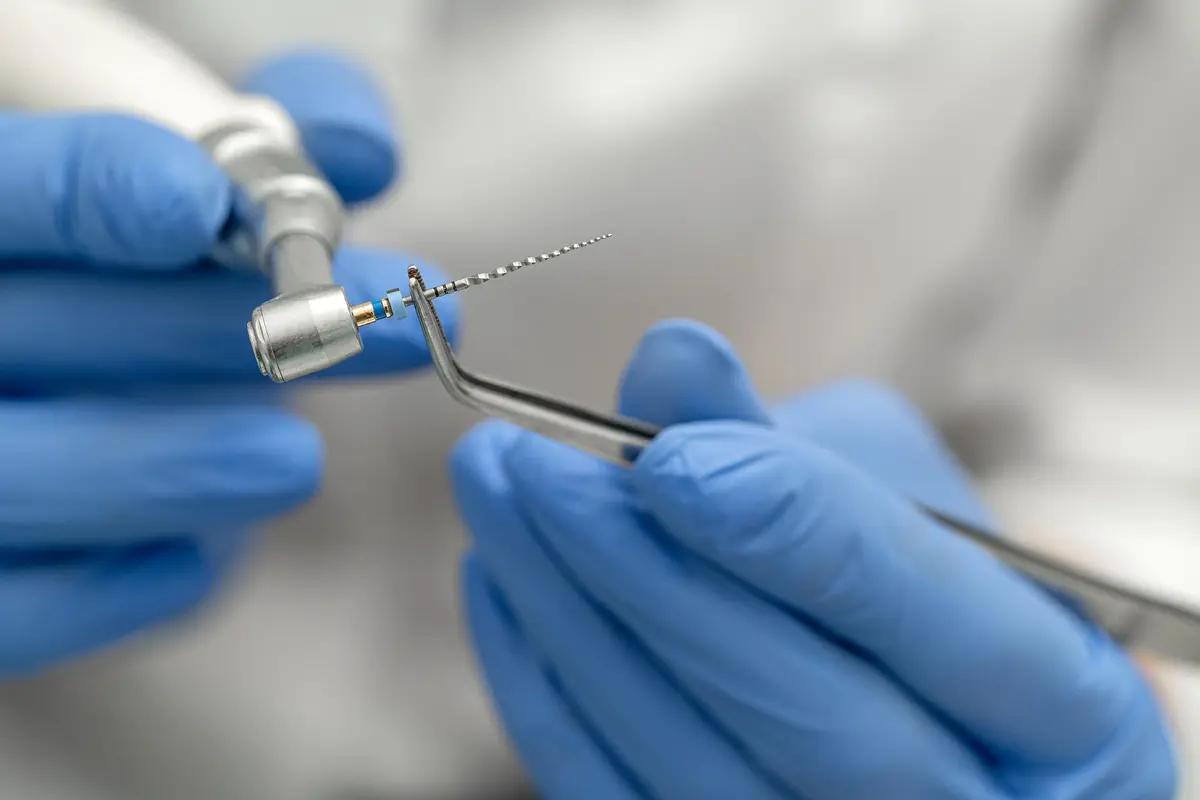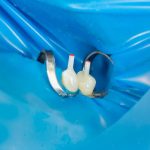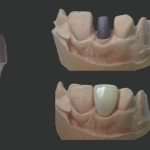
Endodontics is the branch of dentistry that deals with pathologies affecting the vital or necrotic pulp of the tooth. (1)
Super-elastic nickel-titanium (Ni-Ti) alloys have been used in endodontic instruments since the late 1980s (2-3) and the first nickel-titanium rotary endodontic instrument dates back to the early 1990s. (2)
The spread of these new instruments has rapidly revolutionised endodontics,simplifying and speeding up therapies but inevitably increasing costs.
Precisely in an attempt to reduce costs, the vast majority of clinicians have begun to sterilise these instruments by treating them like any other metal instrument. (2)
Endodontic files can separate inside the canals during use, resulting in a potentially irremovable obstacle that would prevent correct root canal disinfection, causing endodontic therapy to fail and condemning the tooth to more complex therapies with an uncertain prognosis.
This complication is far from rare, affecting 2.4% of the files used during a large cohort study. (4)
To understand the nature of this complication so that it can be limited, an analysis was carried out of several aspects related to file usage and processing between uses.
In this article, we will analyse and discuss the disinfection and sterilisation phase of these delicate instruments.
Effectiveness of cleaning, disinfection and sterilisation of endodontic instruments
Normal use leaves a large amount of organic debris on endodontic instruments such as dentin, blood, necrotic material and proteinaceous material. (5)
This debris is very difficult to remove given the complex and articulated structure of endodontic files.
There are various cleaning methods proposed in the literature:
- Ultrasonic tanks;
- Disinfectants (6);
- Manual washing with immersion in detergent/disinfectant liquid (7);
- Plasma cleaning (8).
All these methods are associated with preliminary decontamination by immersion with enzymatic disinfectants capable of dissolving the organic component. (1) The preliminary enzymatic decontamination phase has the dual advantage of reducing the biological risk for operators while allowing the initial removal of organic residues. (9)
The most effective cleaning technique appears to be the ultrasonic bath, provided that the instruments are left completely immersed and free in the bath. (10)
Whatever cleaning method is chosen, it is very difficult to remove all the debris present between the narrow coils of endodontic instruments, especially those with smaller diameters. (1,10)
If, as we have seen, a certain level of organic debris always remains in the narrow concavities of the files, could this problem affect the effectiveness of the sterilisation phase? It has been demonstrated that even the possible presence of debris does not affect the quality of sterilisation and that the heat of the autoclave is capable of destroying all microorganisms. (11)
The most commonly used and most effective sterilisation system is the autoclave at a minimum of 120 degrees for 30 minutes, which is capable of eliminating all bacteria, viruses and spores. (12)
Effect of sterilisation on the mechanical properties of endodontic instruments
One of the main causes of fracture of endodontic instruments is cyclic fatigue. (13)
The alternation of bending and compressive stress on a given point of the metal alloy creates this cyclic stress, which leads inevitably to fracture. (14)
Another cause of fracture is the high torsional stress exerted on the file when it undergoes sudden blocking inside the canal. (15)
In this context, the question arises as to whether the chemical and physical processes of cleaning, disinfection and especially sterilisation could in some way affect the mechanical properties, thus weakening the instruments.
The effects of the various disinfection and sterilisation processes on the mechanical properties of endodontic instruments can be summarised as follows:
- Corrosion of instruments caused by sodium hypochlorite and oxygen;
- Increased surface roughness of nickel-titanium instruments after autoclave sterilisation;
- Reduction of cutting ability of some Ni-Ti alloys (such as M-wire);
- Partial recovery of deformities in Ni-Ti instruments after autoclave sterilisation (16);
- Partial recovery from the cyclic fatigue that accumulates in most Ni-Ti instruments after autoclave sterilisation (17);
- Partial recovery from torsional stress on most Ni-Ti instruments after autoclave sterilisation (18);
- Reduction of the cutting angle and resistance of steel instruments after autoclave sterilisation (19).
All Zhermack solutions for cleaning, disinfection and sterilisation are specific to a particular application (instruments, surfaces, aspiration circuits, hands and impressions) and effective against the main types of microorganisms, in compliance with European regulations.
References
- Dioguardi, M., Sovereto, D., Illuzzi, G., Laneve, E., Raddato, B., Arena, C., … & Lo Muzio, L. (2020). Management of Instrument Sterilization Workflow in Endodontics: A Systematic Review and Meta‐Analysis. International Journal of Dentistry, 2020(1), 5824369.
- https://endodontics.styleitaliano.org/should-rotary-files-be-used-once-part-1/
- Walia et al. An initial investigation of the bending and torsional properties ofNitinol root canal files. J Endod 1988;14:34651
- Wolcott, S., Wolcott, J., Ishley, D., Kennedy, W., Johnson, S., Minnich, S., & Meyers, J. (2006). Separation incidence of protaper rotary instruments: a large cohort clinical evaluation. Journal of endodontics, 32(12), 1139-1141.
- Dioguardi, M., Di Gioia, G., Illuzzi, G., Laneve, E., Cocco, A., & Troiano, G. (2018). Endodontic irrigants: Different methods to improve efficacy and related problems. European journal of dentistry, 12(03), 459-466.
- Perakaki, K., Mellor, A. C., & Qualtrough, A. J. E. (2007). Comparison of an ultrasonic cleaner and a washer disinfector in the cleaning of endodontic files. Journal of Hospital Infection, 67(4), 355-359.
- Linsuwanont, P., Parashos, P., & Messer, H. H. (2004). Cleaning of rotary nickel–titanium endodontic instruments. International endodontic journal, 37(1), 19-28.
- Whittaker, A. G., Graham, E. M., Baxter, R. L., Jones, A. C., Richardson, P. R., Meek, G., … & Baxter, H. C. (2004). Plasma cleaning of dental instruments. Journal of Hospital Infection, 56(1), 37-41.
- Aasim, S. A., Mellor, A. C., & Qualtrough, A. J. E. (2006). The effect of pre‐soaking and time in the ultrasonic cleaner on the cleanliness of sterilized endodontic files. International endodontic journal, 39(2), 143-149.
- Eldik, D. V., Zilm, P. S., Rogers, A. H., & Marin, P. D. (2004). Microbiological evaluation of endodontic files after cleaning and steam sterilization procedures. Australian dental journal, 49(3), 122-127.
- Smith, A., Lange, A., Perrett, D., McHugh, S., & Bagg, J. (2005). Residual protein levels on reprocessed dental instruments. Journal of Hospital Infection, 61(3), 237-241.
- Sheth, N. C., Rathod, Y. V., Shenoi, P. R., Shori, D. D., Khode, R. T., & Khadse, A. P. (2017). Evaluation of new technique of sterilization using biological indicator. Journal of Conservative Dentistry and Endodontics, 20(5), 346-350.
- Shen, Y., Riyahi, A. M., Campbell, L., Zhou, H., Du, T., Wang, Z., … & Haapasalo, M. (2015). Effect of a combination of torsional and cyclic fatigue preloading on the fracture behavior of K3 and K3XF instruments. Journal of endodontics, 41(4), 526-530.
- Lopes, H. P., Vieira, M. V., Elias, C. N., Gonçalves, L. S., Siqueira Jr, J. F., Moreira, E. J., … & Souza, L. C. (2013). Influence of the geometry of curved artificial canals on the fracture of rotary nickel-titanium instruments subjected to cyclic fatigue tests. Journal of endodontics, 39(5), 704-707.
- Setzer, F. C., & Böhme, C. P. (2013). Influence of combined cyclic fatigue and torsional stress on the fracture point of nickel-titanium rotary instruments. Journal of endodontics, 39(1), 133-137.
- Alfoqom Alazemi, M., Bryant, S. T., & Dummer, P. M. H. (2015). Deformation of HyFlex CM instruments and their shape recovery following heat sterilization. International Endodontic Journal, 48(6), 593-601.
- Plotino, G., Costanzo, A., Grande, N. M., Petrovic, R., Testarelli, L., & Gambarini, G. (2012). Experimental evaluation on the influence of autoclave sterilization on the cyclic fatigue of new nickel-titanium rotary instruments. Journal of endodontics, 38(2), 222-225.
- Hilt, B. R., Cunningham, C. J., Shen, C., & Richards, N. (2000). Torsional properties of stainless-steel and nickel-titanium files after multiple autoclave sterilizations. Journal of endodontics, 26(2), 76-80.
- Haïkel, Y., Serfaty, R., Bleicher, P., Lwin, T. T. C., & Allemann, C. (1996). Effects of cleaning, disinfection, and sterilization procedures on the cutting efficiency of endodontic files. Journal of Endodontics, 22(12), 657-661.
Would you like more information about Zhermack Dental products and solutions?
Contact us




 Zhermack SpA has been one of the most important producers and international distributors of alginates, gypsums and silicone compounds for the dental sector for over 40 years. It has also developed solutions for the industrial and wellbeing sectors.
Zhermack SpA - Via Bovazecchino, 100 - 45021 Badia Polesine (RO), Italy.
Zhermack SpA has been one of the most important producers and international distributors of alginates, gypsums and silicone compounds for the dental sector for over 40 years. It has also developed solutions for the industrial and wellbeing sectors.
Zhermack SpA - Via Bovazecchino, 100 - 45021 Badia Polesine (RO), Italy.


